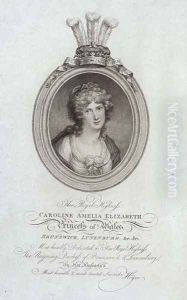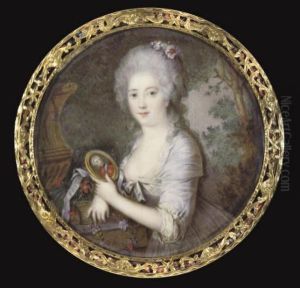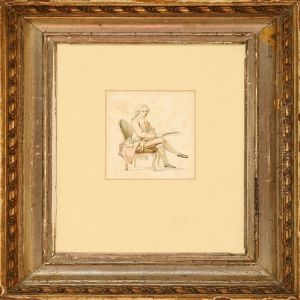Hoyer, Cornelius Paintings
Cornelius Hoyer was a distinguished Danish miniaturist painter whose work gained prominence in the late 18th century. Born in 1741 in Copenhagen, Denmark, Hoyer developed an early passion for the arts, which was nurtured in a period rich with cultural flourishing in Europe. He embarked on his artistic journey at a young age, dedicating himself to mastering the intricate art of miniature painting, a genre that was highly popular among the aristocracy and royal courts of Europe for its delicate and detailed portrayal of subjects.
Hoyer's talent and skill quickly earned him recognition, and he became well-known for his ability to capture the essence and likeness of his subjects with exquisite detail and sensitivity. His miniatures often featured portraits of notable figures of his time, including royalty, nobility, and distinguished members of society. Hoyer’s work was characterized by its fine brushwork, attention to detail, and the luminous quality of his colors, which brought his subjects to life in a manner that was both intimate and striking.
Throughout his career, Cornelius Hoyer traveled extensively across Europe, which was a common practice among artists of his era seeking patronage and new influences. His travels took him to several key cultural centers, including Paris and St. Petersburg, where he worked and studied under leading artists of the time. These experiences enriched Hoyer's artistic style and exposed him to a wide range of artistic influences, further enhancing his reputation as a master miniaturist.
Despite the considerable success and recognition he received during his lifetime, Hoyer's work, like that of many miniaturists, became somewhat overshadowed by the larger canvas paintings of his contemporaries as trends in art shifted. Nevertheless, his contributions to the field of miniature painting have not been forgotten, and his works continue to be appreciated for their technical proficiency and emotional depth. Cornelius Hoyer passed away in 1804, leaving behind a legacy as one of Denmark’s foremost miniaturist painters, whose works remain highly valued by collectors and art historians for their beauty and historical significance.


